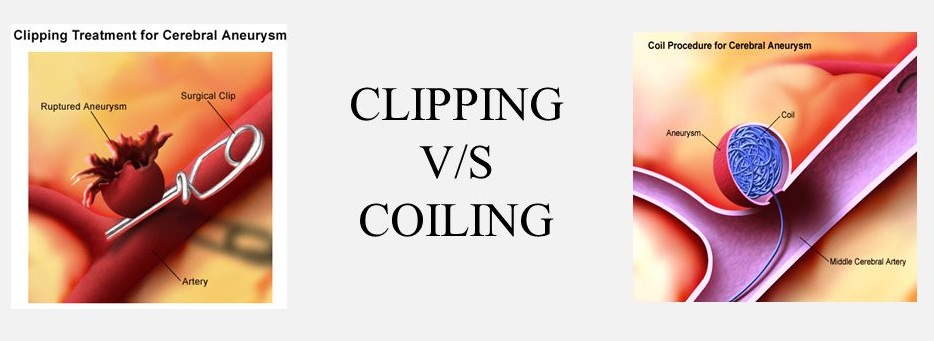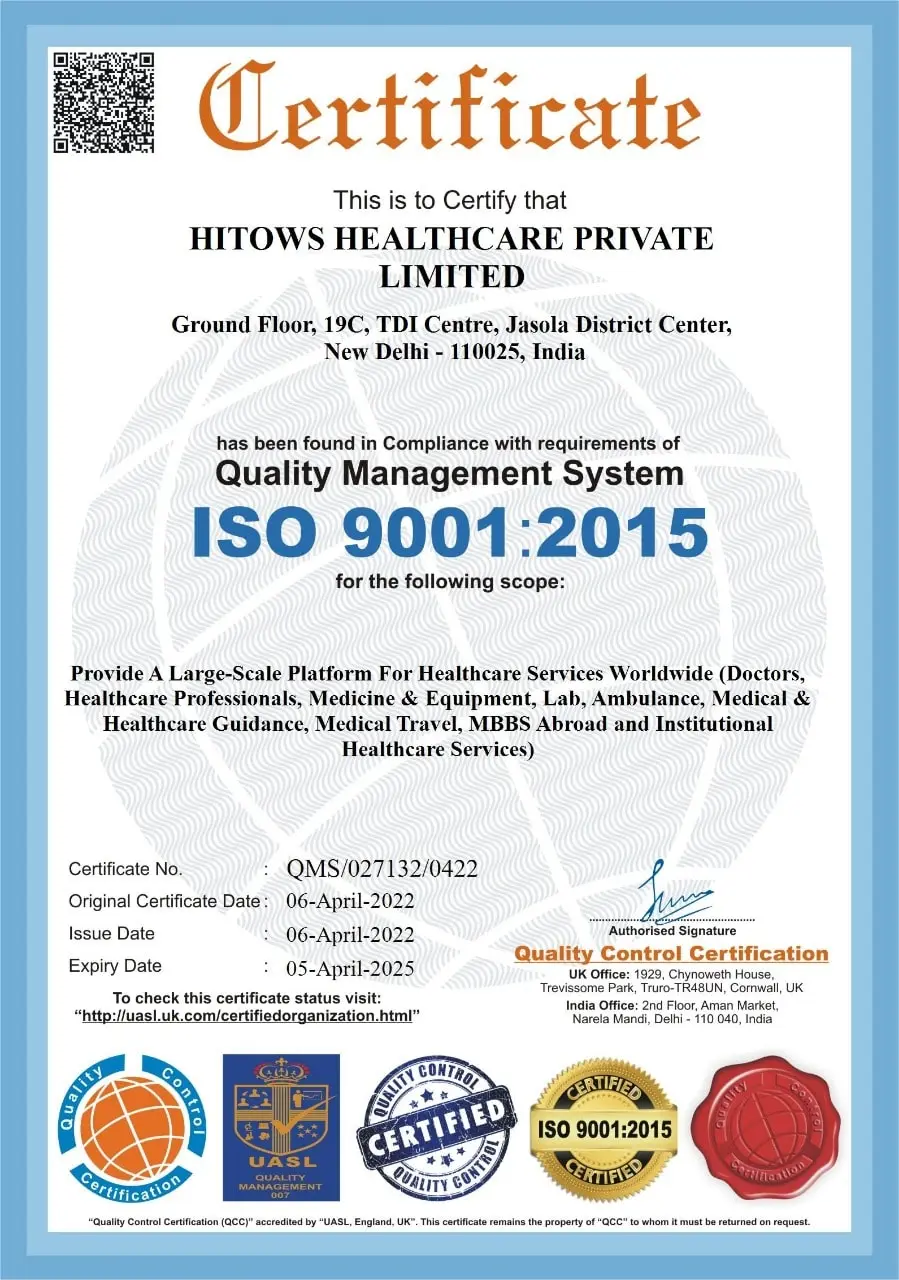Cerebral Dsa And Based On DSA Coiling Or Clipping or Cerebral Angiogram
India
-
Our Price USD 270
-
Hospital Price USD 300
-
You Save : USD 30
Booking Amount: USD 27. Pay Remaining 90% at the hospital.
Book NowAdditional Credit
Among the important extras we offer as part of the Additional Credit are the following:
-
Site Tourism For The Patient & Attendant
-
Airport Pick & Drop Service
-
Ambulance service at airport
-
Priority appointments with The Doctor
-
Cancel Easily Anytime with Full Refund
-
Room Upgradation
-
Free Online Doctor Consultation Valued at USD 20
-
Free hotel Stay for 5 to 7 days Accordingly
-
Welcome Kit at Arrival
-
Interpreter
-
Medical Visa Assistance
What is Included?
- Doctor consultation charges
- Lab tests and diagnostic charges
- Room charges inside hospital during the procedure
- Surgeon Fee
- Cost of implant
- Nursing charges
- Hospital surgery suite charges
- Anesthesia charges
- Routine medicines and routine consumables (bandages, dressings etc.)
- Food and Beverages inside hospital stay for patient and one attendant.
What is not Included?
- Extra Radiology Investigations
- Healthcare Professionals Charges of other consultations.
- Other Requested Services such as Laundry etc.
- Additional Pharmaceutical Products and Medicines After Discharge from Hospital.
- Management of Conditions Unrelated to Procedures or Pre-Existing.
- The cost of any additional implants will be in addition to the package cost.
Package Description
Cerebral Dsa And Based On DSA Coiling Or Clipping or Cerebral Angiogram
Cerebral DSA generates a picture of the brain's blood arteries in order to diagnose a blood flow abnormality. A catheter (a tiny, thin tube) is inserted into an artery in the leg and passed up to the blood arteries in the brain during the process.
The practise of endovascular coiling is used to stop blood flow into an aneurysm (a weakened area in the wall of an artery). Endovascular coiling is a newer therapy for aneurysms in the brain. Endovascular coiling is a minimally invasive method that eliminates the need for a skull incision to repair a brain aneurysm. To access the aneurysm in the brain, a catheter is utilised instead. A catheter is inserted via the groyne into the artery harbouring the aneurysm during endovascular coiling. After that, platinum coils are freed. The coils cause clotting (embolization) of the aneurysm, preventing blood from flowing into it.
Disease Overview:
Arterial and venous occlusions
PVDs (also known as peripheral vascular insufficiencies) are ailments and disorders that prevent blood from flowing freely through blood vessels throughout the body, except the heart and brain. Arterial and venous occlusions are two types of PVDs that arise when the arteries or veins get clogged or inhibited by different substances.
Atherosclerosis, which is the formation of fatty deposits (also known as plaque) inside a blood artery, is responsible for the great majority of arterial occlusions (90 percent). Compared to veins, atherosclerosis is far more frequent in arteries. As a result, atherosclerosis is not a prevalent cause of vein occlusions. Thrombosis, or the formation of a blood clot inside a blood artery, is the most common cause of venous occlusions.
Disease Signs and Symptoms:
The symptoms of arterial thrombosis vary depending on where the blood clot is located. Thrombosis can cause a variety of symptoms, including:
- One leg hurts
- chest discomfort and a swelling leg or arm
Mental changes on one side of the body numbness on one side of the body weakness on one side of the body
Many people, on the other hand, will not notice that they have a blood clot in their artery until it has created further issues by limiting blood flow to other regions of the body.
Disease Causes:
Arterial thrombosis can affect anybody, however some people are more vulnerable than others.
Atherosclerosis-related artery damage is the most common cause of arterial thrombosis. Atherosclerosis is a condition in which plaque builds up on the inside walls of arteries.
The arteries then constrict and stiffen, increasing the risk of arterial thrombosis.
A person's lifestyle and health factors might increase their chances of acquiring arterial thrombosis.
A blood clot in an artery can be caused by a number of circumstances, including:
- High blood pressure, diabetes, and smoking
- Obesity and high cholesterol
- not eating a well-balanced diet having a family history of arterial thrombosis being too elderly to exercise
Disease Diagnosis:
The diagnosis of arterial and venous occlusions can be done in a variety of methods. An ankle brachial index (ABI) can be utilised to assist identify an occlusion if it is thought to be in the legs. The blood pressure of both an arm and a leg is measured to perform an ankle brachial index (ABI). When the blood pressure in the leg is much lower than the blood pressure in the arm, it's usually a symptom of a leg occlusion (the occlusion will prevent blood flow through the leg, which will decrease blood pressure).
Furthermore, imaging tests can be done to look within the blood arteries to identify if any occlusions exist. Imaging tests include the following:
Angiography is a procedure that involves injecting a contrast dye into the blood arteries and then examining them using an x-ray. The dye will make occlusions in x-rays more easier to see.
Ultrasound: Using sound waves to see into a person's body, especially the interior of blood vessels (much as when a doctor does an ultrasound to look inside a pregnant woman's tummy to see whether there is a baby within).
Disease Treatment:
The following treatments for arterial thrombosis may be suggested by doctors:
- Blood thinners are drugs that thin the blood.
- To assist dissolve the clots, a doctor may give blood thinners. As a first line of defence, they may provide thrombolytic medicines.
- Thrombolytics are a class of powerful blood thinners that can dissolve clots faster but potentially induce hazardous bleeding.
- To prevent the chance of another clot, some patients may need to continue taking these medications.
- These drugs may not be safe for people who are going to give birth or undergo surgery.
- If the individual develops atherosclerosis, a stroke, or a heart attack, they may need to be treated for the rest of their lives.
Surgery
Coronary artery bypass and carotid endarterectomy are two types of surgery used to treat arterial thrombosis that has blocked an artery leading to the heart.
A blood vessel from another region of the body is used to bypass the blockage in coronary artery bypass surgery. Surgeons remove fatty deposits in the neck arteries that might cause a stroke during a carotid endarterectomy.
Doctors may also suggest a technique known as coronary angioplasty, which does not require an incision. To enlarge the artery, surgeons may use a stent or a balloon.
Taking care of the problem The underlying cause of blood clots must also be addressed.
A blood clot, for example, might be a sign of cancer in patients who have no risk factors, according to a 2016 research.
Changes in behaviour
To minimise plaque in their arteries, some patients may need to undertake behavioural or nutritional adjustments.
Here's how to clear your arteries by making behavioural adjustments.
A person may require extra therapy if blood clots create difficulties.
Outlook
Arterial thrombosis is a serious condition that can lead to death. However, with therapy, the prognosis is significantly better.
A person can enhance their viewpoint by doing the following:
Follow a doctor's recommendations and take their meds exactly as prescribed. Let a doctor know if their clot symptoms change or worsen.
Information related to Treatment
Package Details
Days in Hospital
1 Days
Days in Hotel
*
2 Days
Room Type
Private
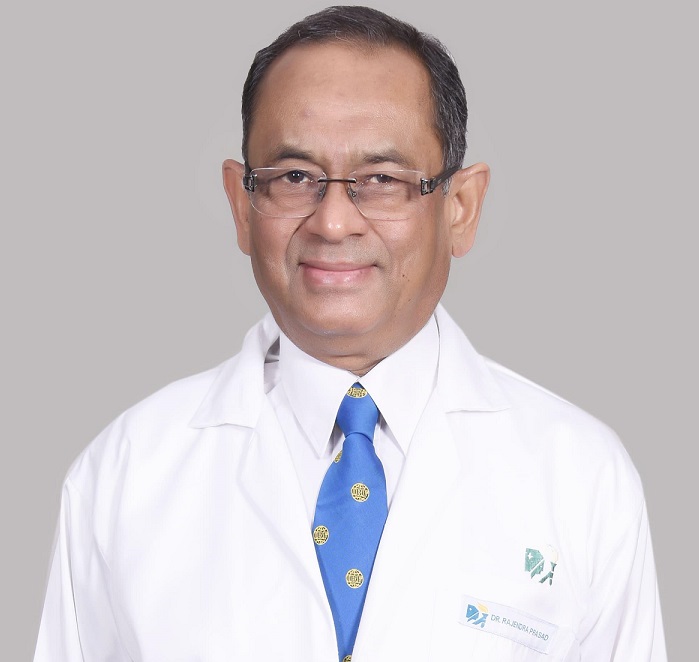
Treating Doctor
Dr. Rajender Prasad
Orthopedist & Spine Surgeon- Ankylosis Spondylitis, Brachial plexus repair, Spinal Tumor, Back pain, Spinal Deformity, Carpal Tunnel Syndrome, Cervical Canal Stenosis, Cervical Disc Prolapse, Congenital Spine Abnormality, Facet Joint & Sacro-Iliac, Lumbar Canal Stenosis, Lumbar Disc Herniation, Sciatica, Spinal Infection, Spinal Injury
Indraprastha Apollo Hospitals, New Delhi New Delhi, India
38 Years of Experience
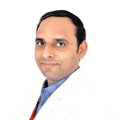
Treating Doctor
Dr. Vipin Tyagi
Orthopedist- Spinal Deformity correction, Correction of deformities, Spasticity, Joint Replacement Surgery, Wrist Problem, Reconstruction and Rehabilitation, Disc Slip, External Fixator, Reconstruction and Bone Lengthening, Cruciate Ligament Recosntruction
Medanta-The Medicity, Gurgaon Gurgaon, India
35 Years of Experience
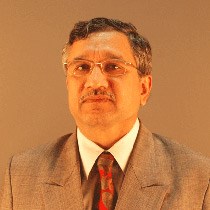
Treating Doctor
Dr. BHAVE ARVIND
Orthopedist & Spine Surgeon- Slip Disc Specialist, Endoscopic Surgery, Minimally invasive spine surgery (MIS), Spine fracture/ trauma, Spinal pain & Spinal Stenosis, Degenerative Spine
Deenanath Mangeshker Hospital and research centre, Pune Pune, India
31 Years of Experience
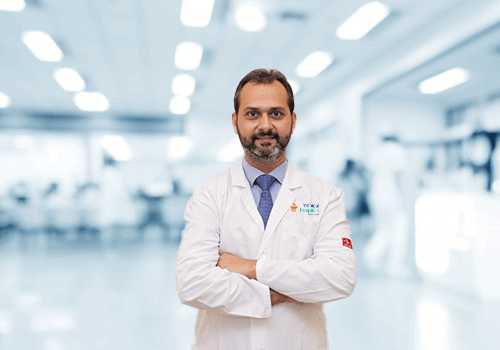
Treating Doctor
Dr. Saurabh Verma
Orthopedist & Spine Surgeon- Minimally Invasive Spine Surgery, Spinal Deformity correction, Spine Traumaq, Degenerative Spine Disorder
Manipal Hospitals New Delhi, India
17 Years of Experience
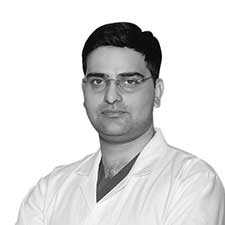
Treating Doctor
Dr. Manish Raj
Orthopedist & Spine Surgeon- Cancer Pain Management, Spine Surgery, Minimally Invasive Spine Surgery, Endoscopic Spine Surgery for slipped discs, Back Ache, Minimal Invasive Tubular Endoscopic Spine Surgeries (MISS), Spine fracture/ trauma, Headache, Shoulder Pain, Back and Neck Pain Management, Knee Pain Treatment, Hand Pain
Yatharth Super Speciality Hospital Noida, India
15 Years of Experience
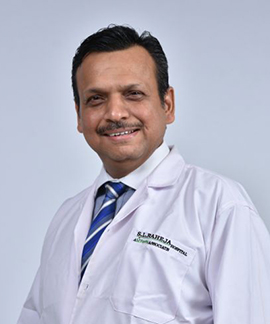
Treating Doctor
Dr. Lalit Panchal
Orthopedist & Spine Surgeon- Spinal Fractures, Kyphoplasty, Vertebroplasty, MIS decompression and TLIF for the spine, Laminectomy, Lumbar Disc Surgery, Scoliosis Surgery, Spinal Fusion, Knee Replacement, Total Hip Replacement, Joint replacement, Arthroplasty, Knee Surgery, Knee Ligament Surgery (ACL), Shoulder Replacement, Shoulder Arthroscopy, Limb Lengthening, Knee Osteotomy, Total Elbow Replacement, Arthroscopy Procedure, Achilles tendon, High tibial osteotomies, Decompression, Carpal Tunnel Syndrome, Percutaneous Discectomies
S. L. Raheja Hospital (A Fortis Associate) Mumbai, India
33 Years of Experience
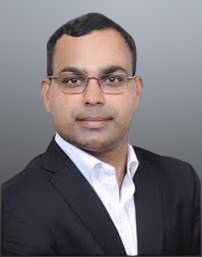
Treating Doctor
Dr Muralidharan V
Orthopedist & Spine Surgeon- Vertebroplasty, Scoliosis, Disc Replacement ( Cervical /Lumber), Complex Spinal Surgeries, Revision Spine and Joint Replacement Surgeries, Vertebroplasty, Scoliosis
Apollo Specialty Hospital, OMR Chennai, India
22 Years of Experience
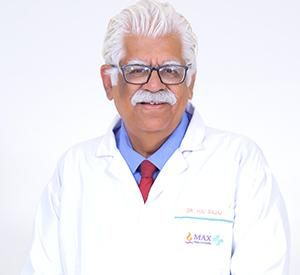
Treating Doctor
Dr H N Bajaj
Orthopedist,Orthopedist & Spine Surgeon- Spine Injury, Spine Injury, Disc Surgery, Spinal pain & Spinal Stenosis, Spinal Infection
Max Super Speciality Hospital New Delhi, India
39 Years of Experience
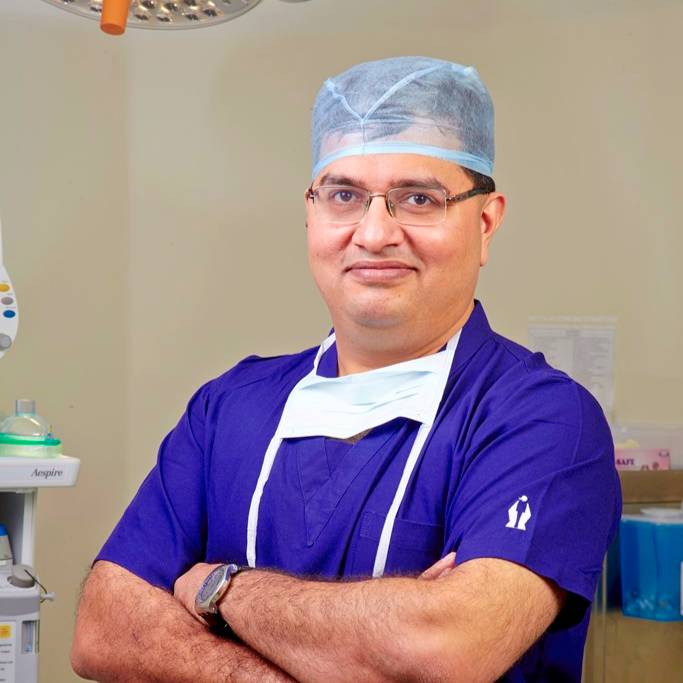
Treating Doctor
Dr. Manoj Padman
Paediatric Orthopaedist- Spinal Deformity correction, Spasticity, Wrist Problem, Spasticity, Correction of deformities, External Fixator, Disk slip, Spasticity, Disk slip, Disk slip, Spasticity
Fortis Memorial Research Institute Gurgaon, India
27 Years of Experience
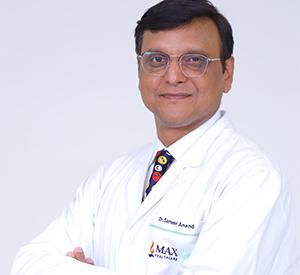
Treating Doctor
Dr Sameer Anand
Spine Surgeon- Trauma care, Vertebroplasty, Minimally invasive spine surgery (MIS), Sports Injuries Surgery, Discogenic pains treatment, Ozone nucleolysis, Vertebroplasty, Degenerative Spine Disorder
Max Super Speciality Hospital New Delhi, India
27 Years of Experience

